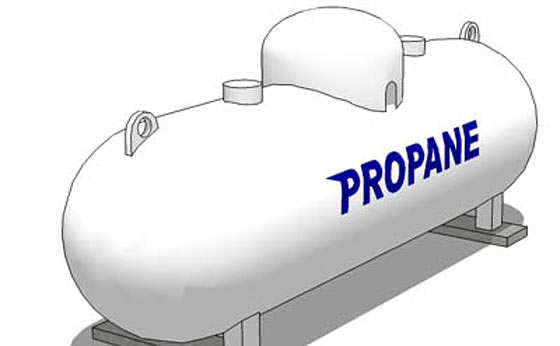Dear Hugh,
In response to D.H.’s questions on gas, I offer my thoughts. Generally, I would tell anyone to use the gas specifically recommended for the equipment they intend to use. Trying to keep it simple about the different gases, an explanation of the differences follows.
The first difference between the gases is chemical makeup. Propane has three carbons atoms (and hydrogen atoms) in the molecule. Butane has four carbons, and so does its isomer iso-butane. Butane is arranged in a four carbon chain, while Iso-butane has a center carbon, with the other three carbons coming off like spokes, and they have different flash points. Natural gas is a combination of methane (one carbon) and many of these other gases. Propane, methane, and butane are all derived from natural gas through a process called fractional distillation that takes advantage of each chemical’s flash points to separate them and remove impurities. Natural gas is brought up from the earth in different ways, but it gets purified first before market. CNG is compressed natural gas, highly pressurized, and somewhat expensive to store. It is probably the least practical, because of the storage tank costs. Aside from chemical differences and molecular structural differences, these gases have different flash points. Flash point refers to the lowest temperature at which the chemical may burn. The lower the flash point, the more hazardous the gas. So, in regards to the question about putting propane (a lower flash point) into a butane lighter (higher flash point), it would be more hazardous. Would you really want to do that at a time when medical assistance might be less available? Yes, in a few automobiles there are some fuels that can be used diversely, but I stress the importance of having the manufacturer’s recommendations. I bought a new gas stove about four years back and had to order one built specifically for liquid propane over natural gas. Liquid propane from a tank is at a higher pressure than natural gas, so there is a slight difference in the parts. (They each require a different orifice.) Conversion kits for stoves are usually available to switch from natural gas to propane.
I advise against blanket statements about crossing fuels for this and that. I believe a better way to go is to purchase equipment that uses the same fuels and are practical for you to store. For instance, you could have a diesel tank that can fuel your truck, tractor, and generator all the same. Diesel is great because it has a higher (safer) flash point. Or, you could have a large liquid propane tank that will power a propane generator, refrigerator, dryer, heater, et cetera. (You should know that some portable propane heaters will get gummed up regulators if you leave the hose connected while not in use. Source: Mr Buddy Heater, response from company in Amazon reviews; see footnote.) Line up your equipment for the same fuel and get a large tank for it. We chose two different fuels and tanks that will power two banks of equipment. Make sure you own/purchase your tank, don’t rent one, and review safety recommendations for how far the tank should be from the house. Don’t forget to put away some chainsaw gas/oil mix, if you plan to heat with a wood stove. I do not claim to be a fuel expert, BUT I have had practical hands-on experience with fuel in work and have a good working knowledge of flash points. With my experience, I would not use fuels against manufacturer’s design, and I strongly recommend against anyone else doing it. Here is a link to a chart of some fuels and flashpoints.
Footnote:
Response from Mr. Heater:
When you connect any of our Buddy model heaters to a remote propane tank, that tank can have over 120 PSI of pressure inside it. This high pressure in the rubber hose connected to the heater can squeeze a plasticizer or an oil out of the rubber in the hose and once it gets into the heater it is trapped and will plug up the tubes and cause the heater to be an unreliable unit. We came up with a fuel filter to prevent this oily substance from getting into the heater when using a high pressure hose. The hose manufacturers came up with a hose that doesn’t have the plasticizers in it so NO filter is needed (our part number for this plasticizer hose is F273704). But the draw back with this hose is with no plasticizers in the rubber it causes the hose to be very stiff especially in cold weather. So you don’t need the filter but you have to work with a hose that doesn’t like to straighten out or is more difficult to work with because of this stiffness. As far as the hose with the quick coupler, this is only available to be used on the Big Buddy MH18B heaters. The Big Buddy has two built in regulators but also has a male quick coupler built-in that by-passes these two regulators so if you have a regulated propane supply like in an RV or your house, you can use our hose to connect to this low pressure source (all low pressure is less than 1/2 PSI of pressure). We also have a hose for the Big Buddy that has the quick coupler connection to the heater and a regulator at the connection to the propane tank, like on a barbeque grill. Because the regulator is mounted directly to the propane tank it reduces the very high 110 PSI of pressure from the tank to the low 1/2 PSI pressure. Because this pressure is so low it will not be able to squeeze out the oily plasticizers from the rubber in the hose and does not need a fuel filter. – Bradford Austin
– Mrs RLB










